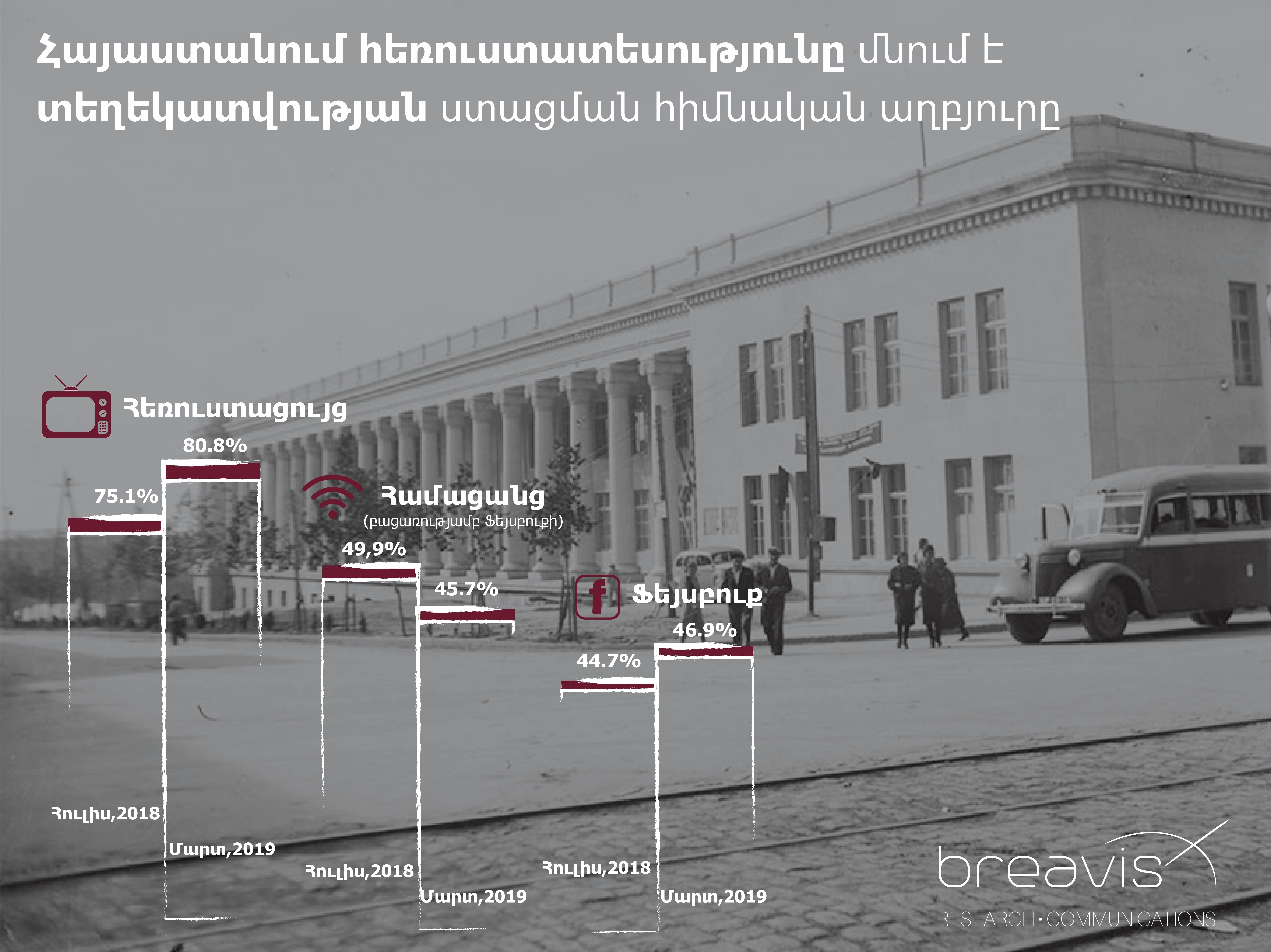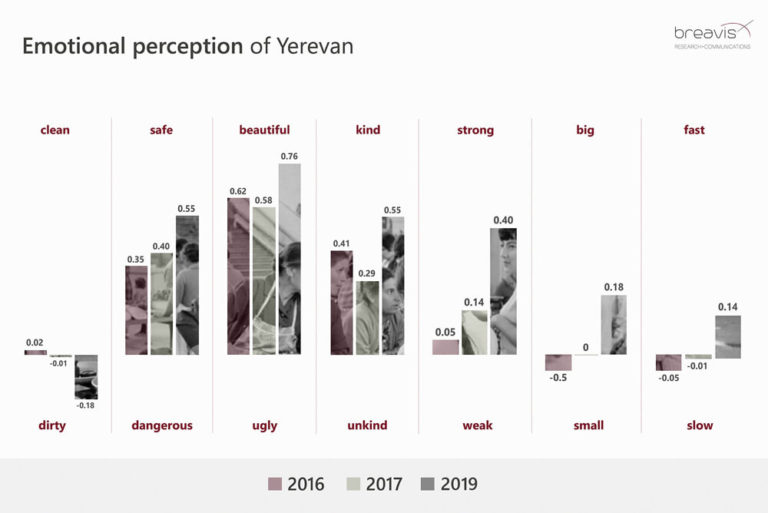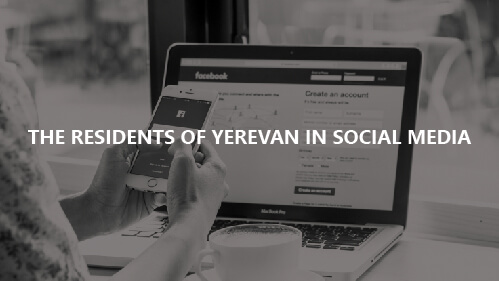018 Reuters digital report reads that TV as the most reliable lifetime information source is lagging far beind the social networks on global level. Meanwhile, the most trusted social networks get redistributed. Thus, Facebook beeing considered the epoch leader is now behind the Instagram, WhatsApp and Snapchat. BBC world news giant re-targeting Instagram communication is the glare evidence of this statement.

Armenia seems to have a different picture in comparison with the current global trends: according to the 2019 Breavis research, information sources in Armenia are classified as per the following priorities:
- TV (80.8%),
- Internet (without Facebook 45.7%),
- Facebook (46.9%).
In addition, it is worth to mention the fact that compared to the 2018 results the TV rates increased for 6.3%. Facebook rate increased too (2.2%), and the reliance on the Internet (without Facebook) dropped by 4.2% in the recent year.
Meanwhile, the above-mentioned Reuters report argues that the young people are gradually switching to messengers (for example to WhatsApp). About half of them prefer to get notifications from such sources. This is explained by the fact that the users prefer more personalized information received from friends other than updates received through Facebook and public news. At the same time, the surveys revealed the trends of increased fake news on Facebook especially in the context of significant events (for example political elections).
In Armenia, the personalized information sources (“Friends, relatives, colleagues, neighbours,” and “Family Members”) are not widely spread yet (respectively 35% and 29.4%). Even though their proportion prevails radio and newspapers. In fact, the global reduction trends of their relevance are noticed also in Armenia.
The Breavis research revealed also the importance of information sources among the population. In this case as well the TV is the first; more than half of population (50.8%) prioritizes the TV.
Of course, that is not news about Facebook being the second most important source for the 24.9% among primary respondents. All other sources are considerably far behind the TV and Facebook.
The story becomes even more fascinating when the statistics stands parallel to the statistics of effectiveness of advertising.



